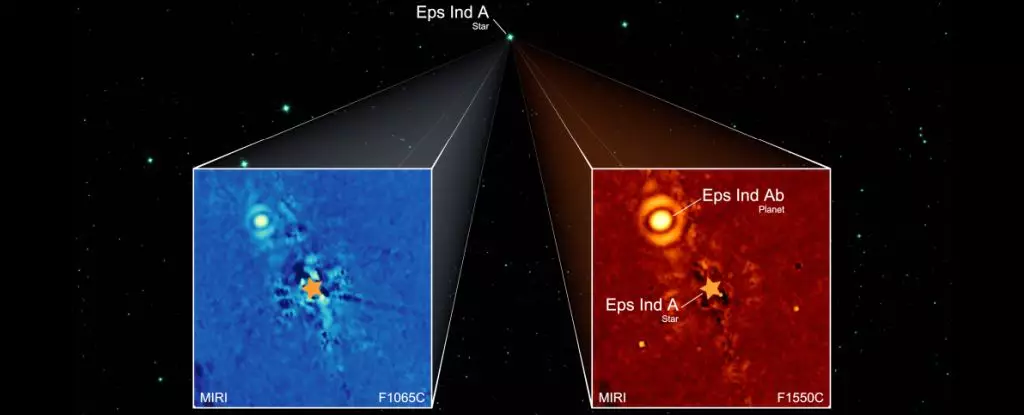Astronomers have pushed the boundaries of exoplanet discovery with the recent findings from the James Webb Space Telescope (JWST). The groundbreaking discovery of a new exoplanet, a gas giant named Eps Ind Ab, has set a new standard in the field. This gas giant has been directly imaged as a separate entity from its host star, marking a significant advancement in exoplanet science. What sets Eps Ind Ab apart is its unique characteristics; it is a super-Jupiter orbiting its star at a distance comparable to that of Neptune from the Sun. This rarity has sparked excitement among astronomers and could potentially open up a new phase in exoplanet research.
Traditionally, the detection of exoplanets has relied on indirect methods, where the presence of a planet is inferred from its effects on its host star. However, direct imaging, as demonstrated in the case of Eps Ind Ab, offers a new perspective on exoplanet exploration. Direct imaging allows astronomers to observe exoplanets as discrete entities, providing valuable insights into their characteristics and behaviors. While direct imaging remains a challenging technique, with only a few exoplanets successfully imaged to date, it holds great promise for unraveling the mysteries of distant planetary systems.
Eps Ind Ab’s parent star, Epsilon Indi A, is located in a triple-star system just 12 light-years away from Earth. The discovery of Eps Ind Ab was made possible by the JWST’s ability to detect faint signals and distinguish them from the glare of the star. Despite initial expectations, the exoplanet appeared in a different location than anticipated, leading to a surprising revelation about its mass and orbital characteristics. Through meticulous observations and data analysis, astronomers confirmed Eps Ind Ab as a cold gas giant with a long orbital period of around 200 years, reminiscent of Neptune’s distance from the Sun.
The discovery of Eps Ind Ab has ignited a sense of curiosity among researchers, prompting them to explore other nearby planetary systems for similar cold gas giants. By leveraging the capabilities of the JWST and other advanced telescopes, astronomers hope to uncover more hidden treasures in the vast expanse of space. Future observations of Eps Ind Ab aim to unveil details about its atmospheric composition and refine its orbital parameters, shedding light on the complexities of exoplanet systems.
The direct imaging of Eps Ind Ab represents a significant milestone in exoplanet science, paving the way for a new era of discovery and exploration. By harnessing cutting-edge technologies and pushing the limits of observation, astronomers continue to unravel the mysteries of distant worlds, offering unprecedented insights into the diversity and complexity of the universe. Eps Ind Ab stands as a testament to the ingenuity and perseverance of the scientific community in their quest to understand the cosmos.



Leave a Reply